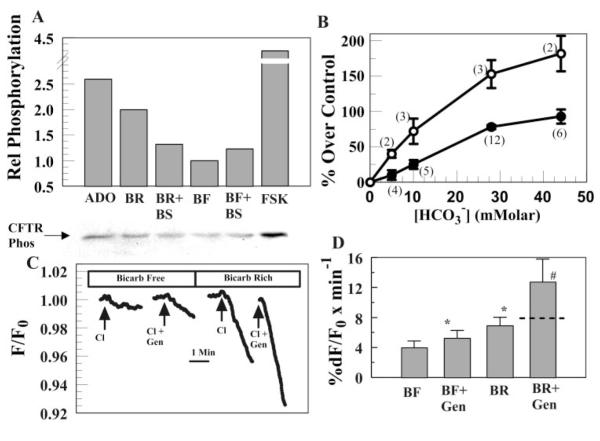Fig. 3.
The presence of increases phosphorylation and sensitizes cystic fibrosis transmembrane conductance regulator (CFTR) to genistein. A, bottom: blot of phosphorylated CFTR from cells incubated in 10 μM adenosine (Ado), 28.5 mM (BR), 28.5 mM + 20 mM (BR + BS), 0 (BF), 0 + 20 mM (BF + BS), or 10 μM forskolin (FSK). A, top: relative CFTR phosphorylation from blot. B: ○, %increase in CFTR phosphorylation after incubation in varying [] relative to 0 ; ●, increase in apical Cl− permeability relative to 0 . Data points are means ± SE; nos. in parentheses indicate the no. of trials. C: effect of 5 μM genistein (Gen) on -activated Cl− permeability in 0.3 mM AMP-CP-treated cells. Breaks in trace indicate periods of wash in Cl−-free solution. D: summary data for C. *Significantly different from BF (n = 10, P < 0.05). #Increment over BF is significantly greater than the sum of the increased rates over BF due to BF + Gen plus BR (indicated by dashed line in BR + Gen bar) (n = 10, P < 0.05).

